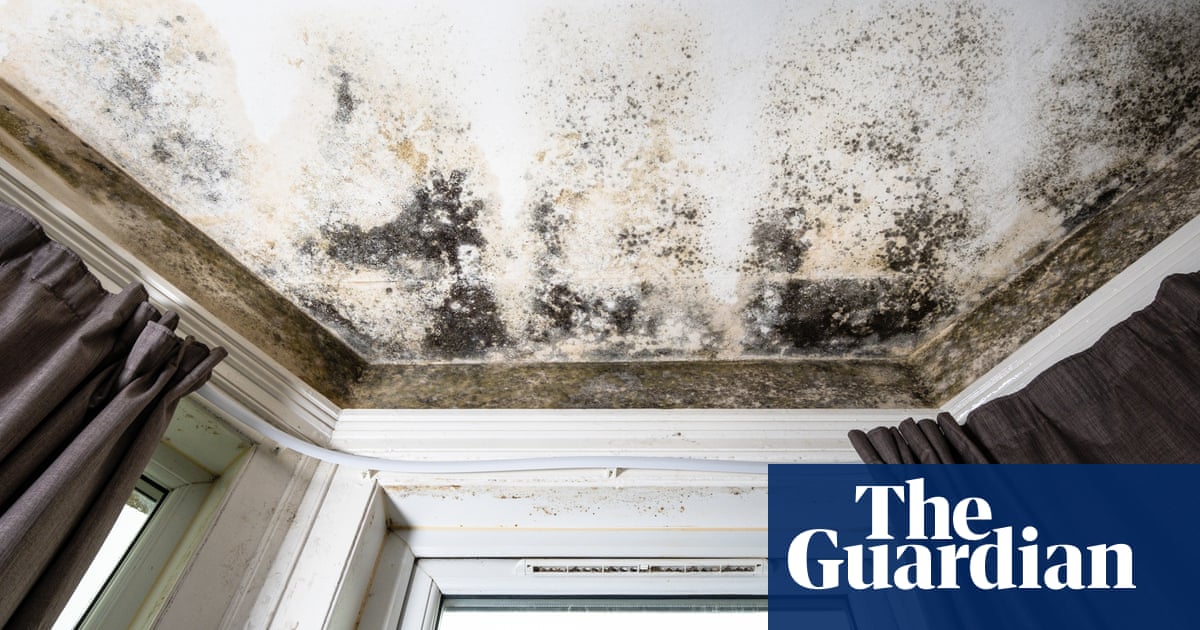
Good design is not only testament to human technical and creative ability, but also to what we want to achieve as a community. In this month’s Design news, you can admire the interplay between design, creativity and socio-political factors in a new exhibition at the Vitra Design Museum on German design during the Cold War years. The show looks at shared ideas as well as the ideological differences and is a fascinating insight into what shapes creativity. For other examples of putting people at the heart of design, there are the stories on the first LGBT+ retirement community in London and how a classic Adidas shoe has been madeover using recycled materials.
For more design features, sign up to the Design Review newsletter
The split personality of German design
Garden Egg Chair by Peter Ghyczy, 1968
FacebookTwitterPinterest
Garden Egg Chair by Peter Ghyczy, 1968 Photograph: Juergen Hans
This week a new show on German design during the Cold War opens at Vitra Design Museum in Weil am Rhein. In 1949, the Federal Republic of Germany was created from the regions of the three western occupation powers (the US, UK and France) and the German Democratic Republic was created from the Soviet occupation zone. The two new states, both trying to recover from the horror of the second world war and Nazi rule, forged new identities under very different socio-political regimes. Both created iconic designs during those Cold War years, such as the Trebant and the Porsche. One of the first Apple computers was made in West Germany by Frog Design, while the wonderfully named Robotron was the state-owned company that created PC 1715 for the GDR’s state-owned companies and government offices. The homeware and furniture created for all the new-build housing constructed to replace the bombed-out ruins left by the war made design stars out of Dieter Rams, Rudolf Horn and Klaus Kunis.
Klaus Kunis watering cans, 1960
FacebookTwitterPinterest
Klaus Kunis watering cans, 1960 Photograph: Yvonne Most/Yvonne Most, Werkleitz
This exhibition is the first to look at design in East and West Germany as a shared history, showing the connections as well as the many cultural differences. A unique insight into how design makes sense of the world around us – and the history of a country unlike any other.
German Design: 1949 – 1989 Two Countries, One History is at the Vitra Design Museum until 5 September. Go to the website for online opening days
Faye Toogood’s new homeware range
The Dough range by Toogood Homeware
FacebookTwitterPinterest
The Dough range by Toogood Homeware Photograph: Matthew Donaldson
Creative people are often referred to as working “in a diverse range of disciplines”. Faye Toogood may well trump them all. Her furniture is in major design museums, her clothes are in Vogue and her lighting is sold in Mayfair boutiques. She has curated her own furniture fair, designed shop interiors and, with her sister, made a set of coats for visitors to wear as they explore the V&A. Now the British designer is launching Toogood Homeware. The debut collection is split between two lines: Dough (mugs, jugs, bowls) and Plough (geometric throws). The Dough range is based on imperfect, hand-thrown pottery, with a pleasing plumpness – like bread rising in the oven. The two Plough throws take inspiration from the handmade craft of traditional weavers, plus the look of freshly ploughed country fields. “It was important for me to keep our new homeware collection accessible – everyday, decorative objects that still embody the sculptural, rounded forms we are known for,” she says. “Paired with the handwoven throws, the resulting family of products were the perfect combination of classic and playful.”
Also new this month is a Toogood x Birkenstock collection, featuring idiosyncratic takes on the celebrated sandal in canvas, felt and suede, clothing and a bed made up of puffy layers of leather and canvas with a cork base – the ideal spot, perhaps, to dream up another new idea.
The UK’s first LGBT+ retirement homes
The Bankhouse housing developement in Vauxhall, London
FacebookTwitterPinterest
The Bankhouse housing development in Vauxhall, London Photograph: Tonic
This month, funding for the first LGBT+ retirement community in London was agreed. The mayor of London confirmed a community housing loan for Tonic Housing to buy 19 homes in Bankhouse, a Norman Foster-designed development in Vauxhall overlooking the Thames.
The Tonic Housing association was founded in 2014 to help combat loneliness and isolation amongst older LGBT+ people, who are more likely to live alone and have less family support. A Tonic report in 2020 also found that 78% of older LGBT+ people actively want to live in a community that offers appropriate activities and care that respects their community and history.
Balcony view from the Bankhouse development designed by Norman Foster
FacebookTwitterPinterest
Balcony view from the Bankhouse development designed by Norman Foster Photograph: Tonic
The Bankhouse properties are for sale through the Older Persons Shared Ownership scheme, which means they will remain as a community asset.
Anna Kear, CEO of Tonic Housing says: “We’re realising a long-held dream to provide a safe place for older LGBT+ people to live well in a community where they can be themselves and enjoy their later life. We’re so excited to get our future residents settled in their new homes and living in our community. Moving in is just the beginning.”
The names to watch in British ceramics
Alison Cooke’s Heavy Lode, 2019
FacebookTwitterPinterest
Alison Cooke’s Heavy Lode made from clay dug from two Penwith mines, 2019 Photograph: Alison Cooke
The 10 artists shortlisted for the Award ceramics prize have been announced. The ceramicists’ work will appear in an exhibition at the British Ceramics Biennial, also called Award. This group show tries to document the current trends and innovations in pottery, providing a snapshot of the contemporary ceramics scene. The pieces picked for this year’s exhibition certainly demonstrate how varied the current crop of ceramicists are, both in style and artistic ambition. Through vessels, mosaics and sculpture these potters explore environmental, political and social themes.
Artist Alison Cooke is creating an installation using clay dug from beneath the North Sea, acquired through a collaboration with scientific research project Europe’s Lost Frontiers. Connor Coulston’s work is inspired by charity shop ornaments and looks at social issues. His work for Award reimagines a Christmas angel ornament as a depressed single mother of four. Ho Lai is making a series of red-stained, bone china wall hangings in the outline of Hong Kong, a comment on government policy on migration. There will also be table settings, large-scale ceramics made with technical tools and even a ceramic silhouette of a refugee boat.
Ho Lai’s Sinking, 2020, made from porcelain glaze
FacebookTwitterPinterest
Ho Lai’s Sinking, 2020, made from porcelain glaze Photograph: Ho Lai
The Award show will be a focal point of the British Ceramics Biennial this September and one artist will be awarded a £5,000 prize for excellent and creative ambition.
AWARD is the headline exhibition in the British Ceramics Biennial. The festival runs 11 September - 17 October 2021
The story of lockdown in an illustrated book
Cityscape image from new graphic book Together
FacebookTwitterPinterest
Cityscape image from new graphic book Together Photograph: Luke Adam Hawker
When lockdown fell last year, life would never be the same again. Many people had to abandon or radically alter their plans, and Luke Adam Hawker was one of them. An architect turned artist, Hawker made his name with projects inspired by the world outside. There’s Great Trees – drawings of the public’s favourite trees, as documented by the charity Trees for Cities – and Blue Plaque Doors, a series of sketches of the entrances to the buildings bearing English Heritage memorial blue plaques.
Deprived of the outdoors, Hawker turned inward. “It was hard to give up the freedom to draw on location, something I had built into my life as a cornerstone of both my work and my happiness. Though it was a relatively small sacrifice compared to those being made by so many – and this restriction ultimately led to drawing in a far more reflective and introspective way.”
Together’s protagonist and his dog, inspired by the author’s grandad and pet
FacebookTwitterPinterest
Together’s protagonist and his dog, inspired by the author’s grandad and pet Photograph: Luke Adam Hawker
Hawker spent his time at home in London with his sketchpad, trying to make sense of what was going on around him. The result is Together, a graphic book that records the unfolding pandemic through the eyes of an old man and his dog. “My grandad was my main father figure when I was growing up. He was a real BFG at 6’7”, a calm and reliable force in my life. I felt as though he was the perfect person to take us through the story. It also turned out to be a very therapeutic process for me to reconnect with him.” The dog is based on his own pet, Robin. “She has lifted my spirits on so many occasions and I knew their relationship would be a source of friendship and love.”
Together is a deceptively simple book, the detailed illustrations pull readers into an accurate and thoughtful account of one of the most challenging years in modern history. As Hawker says: “The drawings in this book helped me to process and reflect on this difficult time. My hope is that people find something within these pages to help them do the same.”
Together by Luke Adam Hawker is published by Kyle Books, £16.99 www.octopusbooks.co.uk
The Stan Smith gets a green makeover
The new Adidas Stan Smith, Forever uses a fabric with 100% recycled polyester with recycled rubber soles
FacebookTwitterPinterest
The new Adidas Stan Smith, Forever uses a fabric with 100% recycled polyester with recycled rubber soles Photograph: Adidas
The Adidas Stan Smith tennis shoe is an iconic trainer. It’s been championed by fashion designers and celebrities but still remains simple and comfortable enough to be a streetwear staple for the many who try not to give two hoots about trends. It’s been one of the best-selling trainers since its launch in 1976 and regularly makes the various top 10 best trainer lists compiled by sneakerheads. And, from this month, the Stan Smith adds eco credentials to its achievements. The new Stan Smith, Forever is made from Primegreen, a performance fabric that uses 100% recycled polyester with recycled rubber soles. The new shoes will come in the usual blue Adidas shoebox, but this one will be made of 90% recycled paper. The new launch is part of Adidas’s drive to end plastic waste and switch to using only recycled polyester by 2024. For Stan Smith fans, it means that next time you need to buy a replacement pair of the world’s favourite trainer, you can do so with a clear conscience.
• This article was amended on 24 March 2021. An earlier version said that in 1949 the new German Democratic Republic was part of the Soviet Union; rather, it was in the Soviet sphere of influence.












